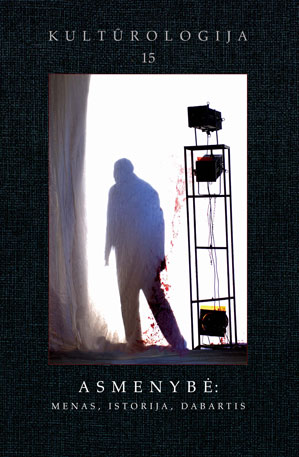Pavelas Petrovas ir Lietuvos baleto raida 1925-1929 metais
Pavelas Petrovas and the Development of Lithuanian Ballet 1925-1929
Author(s): Helmutas ŠabasevičiusSubject(s): Cultural history
Published by: Lietuvos kultūros tyrimų
Keywords: Pavelas Petrovas; Lithuanian ballet; 1925-1929
Summary/Abstract: The beginning of the history of professional Lithuanian ballet generally is considered to be 4 December 1925, with the premiere of Leo Delibes' ballet "Coppelia". The person considered to be Lithuania's first choreographer and teacher, Pavelas Petrovas, was the producer of this performance, and also played the lead role. He helped to lay the foundations for the further development of ballet. The goal of this article, with the help of new sources, including documents (letters, writing) preserved in the Lithuanian literature and art archives, and information and published in the Kaunas press and interpretive mate¬rial, is to look closer at the path of Pavelas Petrovas' work and activities in Kaunas during those years, and evaluate his significance as a ballet master and teacher for the further development of the youngest branch of Lithuanian theatre culture, which is ballet. The period of Pavelas Petrovas' activity is marked by a system of values of dance as a field of artistic creativity which was forming at the time, and did not yet have a well-defined direction, which combined utilitarian entertainment aims with more complex artistic goals. Characteristic of this time is the rather intense migration of artists from Russia, where one saw the names of famous Russian ballet dancers who visited Lithuania alongside Petrovas's name, such as Tamara Karsavina, Viktorina Kriger, and Asaf Meserer. Also the name of Vera Karalli could be seen, who lived and worked for a time in Kaunas. The period of Petrovas' work in Kaunas was significant not only for the art of ballet in Lithuania, but for himself as a choreographer and performer - it was here that he put on 13 ballets, 17 operas and appeared more than 150 times on stage as a dancer. The ballet master purposefully formed a repertoire for a small and rather technically poor troup, putting on simpler one-act ballets, in which the professional and artistic talents of young dancers were developed. Among these performances, the first choreographic embodiment of Lithuanian music is significant - it was a plotless ballet based on Jurgis Karpavièius' music "Lithuanian Rhapsody". Petrovas also began taking on more ambitious performances, with Tchaikovsky's ballet "Swan Lake" standing out with its complicated musical and choreographic performance
Journal: Kultūrologija
- Issue Year: 2007
- Issue No: 15
- Page Range: 177-201
- Page Count: 24
- Language: Lithuanian

